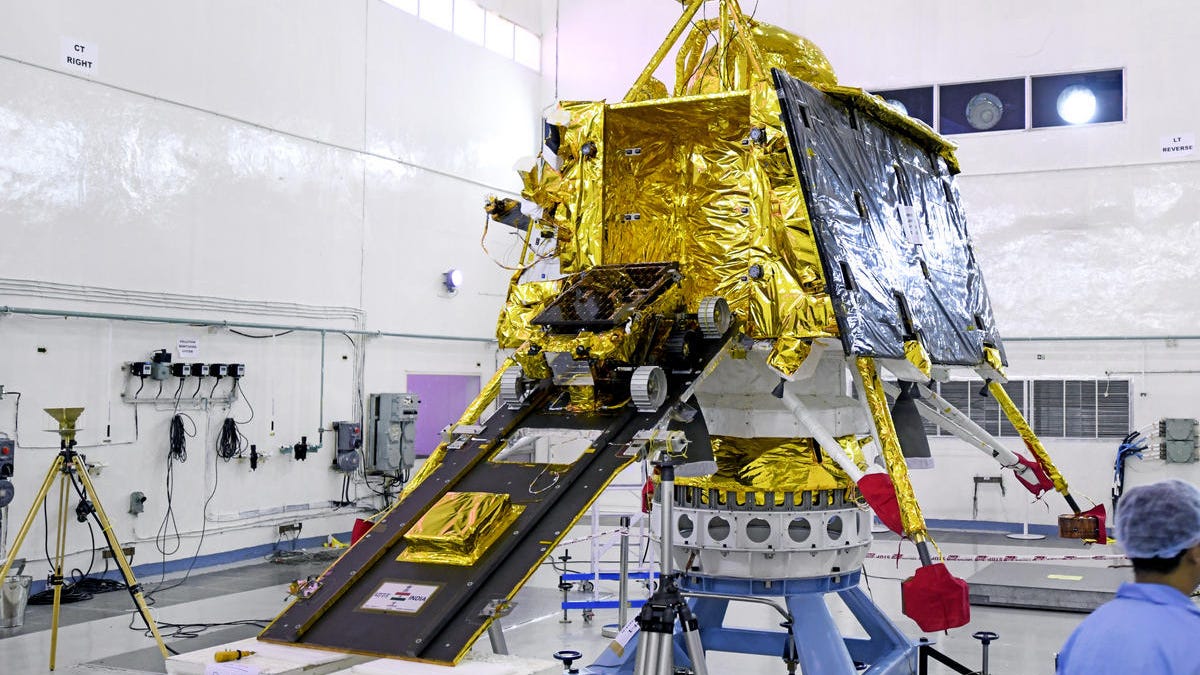India reveals Chandrayaan-2 Vikram moon lander crashed
The spacecraft "hard landed" after an error during descent to the surface.

The Chandrayaan-2 Vikram lander and rover before they went to the moon.
India's Chandrayaan-2 Vikram lander crashed during an attempted moon landing, the nation has acknowledged. In a new report, the Indian government's Department of Space said the Vikram moon lander separated as planned on Sept. 2, but then braked too hard when it came to descending to the surface on Sept. 7.
"After two successful de-orbiting maneuvers, powered descent of the lander was initiated on 7th September 2019 to achieve soft landing on the moon surface," according to the report, which NPR reported Wednesday was in response to a lawmaker's inquiry last week.
The descent's first phase took the lander from 30km to 7.4km above the surface of the moon, with velocity reduced from 1,683m/s to 146m/s. But during the second phase of descent, "the reduction in velocity was more than the designed value."
"Due to this deviation, the initial conditions at the start of the fine braking phase were beyond the designed parameters," the government said. "As a result, Vikram hard landed within 500m of the designated landing site."
The Vikram lander, which housed the Pragyan rover, may have been unsuccessful in its mission, but Chandrayaan-2 also featured a moon orbiter. The Indian space department added all eight of the orbiter's scientific instruments are performing as planned and it has increased its mission life to seven years.
Though India have no 'feet on the ground' now that Vikram's demise is confirmed, the orbiter will provide valuable scientific contributions over the course of its life. It continues a high resolution camera, infrared spectrometer and radar instruments to provide an updated map of the moon. The first Indian orbiter, Chandrayaan-1, was critical to discovering water on the Moon, after it blasted Earth's lone satellite with an impact probe in 2009.
Late last month, the lander was still missing despite NASA's search efforts. The Indian Space Research Organization (ISRO) had lost communication with the lander shortly before it was set to land on the moon. NASA's Lunar Reconnaissance Orbiter (LRO) had scanned the expected landing area since mid-September, but hadn't been able to spot the lander, which was meant to investigate the unexplored south pole of the moon.
"It is possible that Vikram is located in a shadow or outside of the search area. Because of the low latitude, approximately 70 degrees south, the area is never completely free of shadows," NASA said in a statement last month. The LRO certainly has the capability to snap landing locations, however, and has been able to locate China's Chang'e-4 lander on the far side of the moon.
Updated 4:50 p.m. PT: Adds additional background, orbiter information



